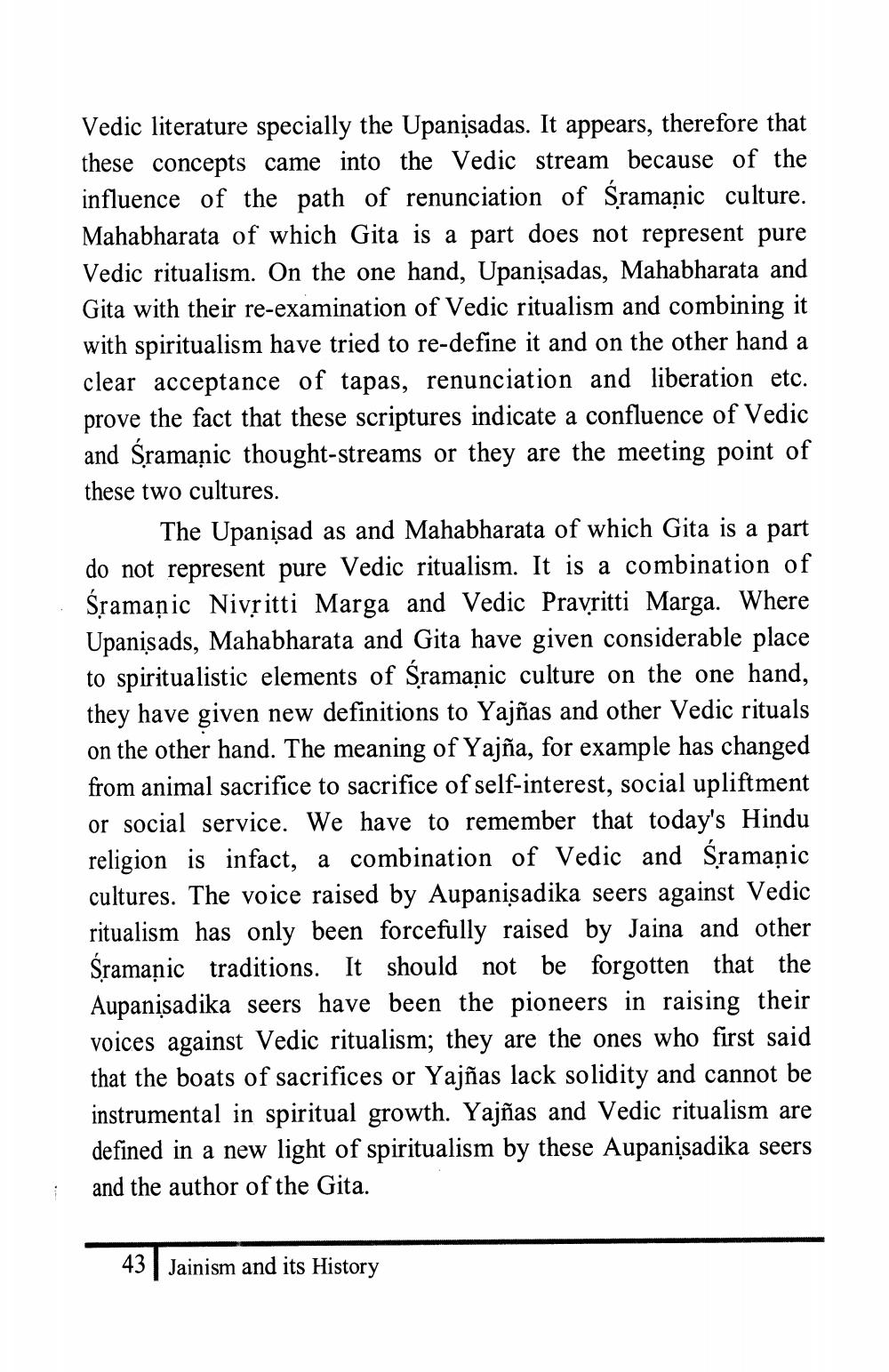________________
Vedic literature specially the Upanisadas. It appears, therefore that these concepts came into the Vedic stream because of the influence of the path of renunciation of Sramanic culture. Mahabharata of which Gita is a part does not represent pure Vedic ritualism. On the one hand, Upanisadas, Mahabharata and Gita with their re-examination of Vedic ritualism and combining it with spiritualism have tried to re-define it and on the other hand a clear acceptance of tapas, renunciation and liberation etc. prove the fact that these scriptures indicate a confluence of Vedic and sramanic thought-streams or they are the meeting point of these two cultures.
The Upanisad as and Mahabharata of which Gita is a part do not represent pure Vedic ritualism. It is a combination of Sramanic Nivritti Marga and Vedic Pravritti Marga. Where Upanisads, Mahabharata and Gita have given considerable place to spiritualistic elements of Sramanic culture on the one hand, they have given new definitions to Yajñas and other Vedic rituals on the other hand. The meaning of Yajña, for example has changed from animal sacrifice to sacrifice of self-interest, social upliftment or social service. We have to remember that today's Hindu religion is infact, a combination of Vedic and Sramanic cultures. The voice raised by Aupanişadika seers against Vedic ritualism has only been forcefully raised by Jaina and other Śramanic traditions. It should not be forgotten that the Aupanısadika seers have been the pioneers in raising their voices against Vedic ritualism; they are the ones who first said that the boats of sacrifices or Yajñas lack solidity and cannot be instrumental in spiritual growth. Yajñas and Vedic ritualism are defined in a new light of spiritualism by these Aupanisadika seers and the author of the Gita.
43 Jainism and its History




